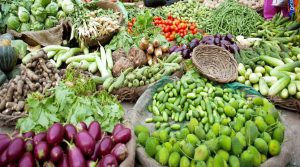This lockdown hunger is not the only worry. Post-COVID, access to safe and nutritious foods would be uncertain if adequate policy measures are not taken.
The COVID-19 pandemic has further worsened India’s hunger and malnutrition woes, more so for the millions of informal workers, on their way back home or struggling to meet two ends in their urban and rural homes. Their embedded informality over labour, land and housing tenure has uprooted and shaken them with loss of income, occupation and habitat, multiplying their already entrenched nutrition vulnerability.
Given the already acknowledged multidimensionality of the nutritional problem and its significant connection to immunity, further oversight or negligence, implicates a heavy toll on these de-facto nation builders, either through COVID-19 infestation, poised now for community spread or en-route the lockdown hunger and its chronic accompaniment, the hidden hunger, often used to denote micronutrient malnutrition.
India ranks low at 102 in the 2019 Global Hunger Index, below its neighbours, Nepal, Bangladesh, Pakistan and Sri Lanka, with documented poorer malnutrition level among the rural poor, agriculture labourers and migrant workers, pregnant and lactating mothers and children.
Without urgent, timely and integrated nourishment through supplemental nutrition, special care and institutional rehabilitation, the infestation of this cohort will be rampant while their malnutrition will translate to a heavy toll on the future GDP. With the relevant loss to GDP, estimated between 4% to 8%, it may undo the impetus intended via post-COVID revival and reform packages.
The COVID-19 associated lockdown has suddenly made visible the poverty and vulnerability of the millions of migrant workers. Their informality is not limited to their urban workplaces; back in their rural homes, where they are headed now, they are also informal labourers and farmers.
These landless agriculture labourers, tenants and small farmers are the rural food producers, city-makers, urban manufacturers and service providers, who feed the nation, take care of the citizens in their homes and nurture its health and nutrition. Together constituting more than half of India’s population, this group, however, remains ultra-vulnerable to hunger and hidden hunger, thanks to their informal and insecure tenure. They are the hardest hit with their women and children during the pandemic.
The declaration of extra allocation of cereal and pulses for the next three months to about 810 million people under the Pradhan Mantri Gareeb Kalyan Yojana with ration cards reflects the appreciation of this hunger by the government. With studies indicating exclusion and inclusion errors as well as leakage in Public Distribution System (PDS) and estimating a low share of PDS grains reaching the intended, most of these vulnerable groups, however, run the risk of being excluded.
To overcome the ration card limitation, the government has now announced two months of free food to an additional 80 million migrant workers, without a card. Though temporary and not well-balanced, it should at least improve the outreach of pandemic-response food ration — better than the 86%, that is reported by a recent survey. Adequate caution and leakage-plugging, however, is called for, with the participation of local governance institutions and civil society members.
The exclusion challenge, unfortunately, also plague the acclaimed Direct Benefit Transfer (DBT) scheme, PM KISAN. The finance minister announced 91.3 million farmers to have received the instalment related to COVID-19.
An ongoing survey by Centre for Sustainable Employment, Azim Premji University, shows the outreach to just 24%. Considering the number of farmers as per Agriculture Census, 2015-16, the PM KISAN net still excludes 4 out of every 10 farmers. Also not included are the 144 million agriculture labourers (Census, 2011) and about 25 million tenants (NITI Aayog, 2016) — in the absence of land records, an eligibility criteria of the scheme.
The nature, outreach and performance of the food and cash transfer schemes and the persistent hunger and malnutrition of the vulnerable, call for a more holistic nutritional response. And the expanding COVID-crisis hitting harder on these informal workers, demands these measures to be expeditious and inclusive.
The target population is converged in rural India, where the unfinished land reform agenda and changed farming imperatives and agrarian relations have increased informal tenancy along with fallowing of land. With about 25 million hectares fallow land available and efficiency of small farms well documented in terms of higher production and net income, formalisation of tenancy focusing on small farmers can be a big first leap forward.
This lockdown hunger is not the only worry. Post-COVID, access to safe and nutritious foods would be a question mark if adequate policy measures are not taken in ensuring satisfactory production, aggregation and marketing while also making the food available to the vulnerable population.
Land leasing reforms to promote smallholder farming
Evidence suggests that small farms, remain the most adaptive, demonstrating higher efficiency in terms of income and production than larger farms. However, the highly pervasive and increasing tenancy has weakened Indian agriculture, reducing total production, by depriving tenants’ access to credit and other entitlements.
Implementation of the Model Land leasing Act, 2016, developed by the NITI Aayog, can offer the security of tenure to existing rural tenants as well as to the returnee migrants willing to farm. This would potentially trigger productive utilisation of land and labour and augment farm and food production, by enhancing access to formal credit and farm-entitlements.
Gram Panchayats can be empowered to lead village-wise listing of potential tenants and enumeration fallow lands, as demonstrated in Kudumbashree in Kerala and AP. Legitimately, they can also facilitate the convergence of MGNREGS for land development and create opportunities of women groups around farm value chain through livelihoods missions, augmenting rural income and local availability of farm-inputs and processed nutritious food.
Strengthening small-farm diversification and local food value chains
Small family farms, globally and in India are known to absorb more labour while intensifying and diversifying production system in small areas. They can easily shoot up production of pulses, millets, tubers, vegetables, fruits, and livestock-products viz. egg, milk and meat. Availability of this food, rich in micronutrients locally is critical to boosting the nutritional status of women and children already suffering hidden hunger due to constrained production and the supply chain disruption of such foods during COVID-19.
Post-COVID agriculture package announced by the government can be made nutrition enabled, with such steps while also promoting local production and value chain development around nutritious foods, thereby generating more formal employments and income locally for farmers, women and their collectives: self-help groups and Farmer Producer Organisations.
Supporting non-timber forest produce collection, value addition and marketing through livelihood missions and ongoing forestry projects, by the tribal women collectives, is critical to increasing cash flow among the vulnerable tribal communities. Allowing forest-foraging visits by women can increase collection and consumption nutritious forest foods at free of cost, through sustainable biodiversity utilisation and conservation.
With a nutrition-orientation, micro, small and medium enterprises can boost up productions along local nutrition value chains in rural India and thereby improve access to safe and nutritious diets, while also creating local avenues for employment.
Leveraging ongoing pandemic management for a malnutrition-free India
Along with increasing production and availability, enhanced nutritious food absorption esp. by the women and children is critical to address hunger and malnutrition. In this direction, POSHAN Abhiyaan, with its mandate for reducing stunting, under-nutrition, low birth weight and anaemia by 2022, can help in addressing malnutrition management while also assisting in pandemic infection management.
Grassroots public health, nutrition and agriculture functionaries can be deployed with essential health supplies, behaviour change communication materials, home visit planners, advisories on nutritious food production, processing and consumptions with messages epidemics. People’s movement, already envisaged in the Abhiyan, can be reoriented to focus on infant and young child and pregnant and lactating women feeding through a campaign engaging women volunteers. Engaged on wages, these women can also help in nutrition sensitisation and monitoring of informal-worker families at local quarantine centres and their rural homes.
Managing food waste and food loss
Approximately one-third of the food produced is lost or wasted in the value chain. During the ongoing crisis, such food loss or wastage across the value chain must be minimised.
The lockdown has drastically affected the marketing of the food produced by the smallholder farmers. Central and state governments can introduce local procurement and distribution using channels of mid-day meals (MDM) and integrated child development services (ICDS) supplementary nutrition programs, engaging the surplus workforce, women and men, now converged in the villages.
IT-enabled monitoring for evidence-based policy
Data from the National Family Health Survey (NFHS) and the latest Comprehensive National Nutrition Survey (CNNS) reveal that malnutrition is the leading inhibiting factor for a healthier India. Morbidity and mortality arising from infectious diseases hamper the country’s GDP and economy and subsistence living of the poor. It is time to coordinate building a robust IT platform to collect and consolidate relevant data, with a focus on these vulnerable groups, for informed decision making and inert-sectoral synergy.
At a time when hunger and malnutrition are already sitting pretty on the ultra-vulnerable informal workers; the COVID pandemic has compounded their burden. Like the one-health approach, a holistic approach spanning land-agriculture-nutrition is what required to nourish these undernourished and accordingly the policy incentives must be repurposed.
There is an urgent need to go beyond the cash and food transfers imperatives and invest in building nutrition-resilience pathways for coping with COVID19. Formalising land and labour relations in rural areas and localising production and value chain development of nutritious food through small farming and women-collectives can be a dignified way to add assets, incomes and food in the hand of informal workers. This would also help the nation builders now converging in rural India to trigger a rural revival, as Gandhi would have dreamt.
Source: https://bit.ly/2ZzaZXi





